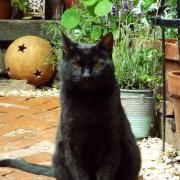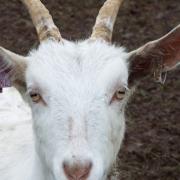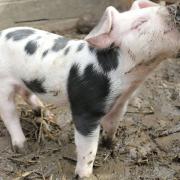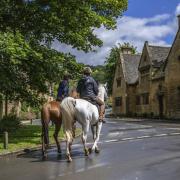Adam Edwards: It is fair to say that the cocker spaniel is not a dog for those of a nervous disposition
It is the Pets Issue, says my editor. Groan. I haven’t got any pets. I didn’t have any when I was growing up – except for a brief love affair with Spangles the goldfish that died aged 48-hours after washing-up liquid was squirted into his bowl - and I haven’t got any now unless you count the field mouse in my sitting room that refuses to tuck into the cheese, peanut butter or chocolate with which I bait the trap.
On the other hand I am partial to dogs, as long as they are not my own, and in particular I like cocker spaniels, which have been in the news recently. Firstly Prince William, asked to name his top five supporters said they were his missus, his Bro, his Old Man, his Gramps and Nan and Lupo, his cocker spaniel dog (I know, I know, that’s six, but we’re talking English aristocracy here). Meanwhile a four-year-old English cocker, Ginger, has surprised the members of a Scottish conversational Gaelic speaking class by mastering the necessary basics of the language in three weeks and responding to ‘suidh’ (sit), ‘fuirich’ (stay) and ‘trobhad’ (come here) although he has yet to cower to the words `Ya Bas Sassenach’ (English bastard).
Truman Capote, the notorious New York gossip and author of Breakfast at Tiffany’s, told my favourite cocker story. The writer recounted the tale of a friend’s disastrous date. He, the man, was waiting in the living room of his date’s apartment playing fetch the ball with the woman’s spaniel, Rocco. The game was going swimmingly until the man threw the ball too hard. It took a huge bounce, sailed through the open French window and flew over the 12th floor balcony. Rocco followed. When the woman emerged from her bedroom and asked what had happened to her beloved mutt the man replied, “The dog seemed very depressed to me,”.
This story may of course be apocryphal but what gives it the ring of truth is the behaviour of the spaniel. It is in the nature of the tail-wagging, floppy-eared beast to follow blindly where other quadrupeds take a more measured view.
A couple of years ago, for example, Denise and Kevin Rowell’s cocker Bobby chased a seagull off a headland and was saved when he landed on soft seaweed 100-feet below. His only injuries were a chipped tooth and a broken toe.
And then there is Buddy who chased a rabbit over a cliff edge in Cornwall, fell a 100 feet, climbed back up the cliff, tumbled down the steep rock face again and swam nearly a mile to the safety of a yacht.
From the above it is fair to say that the cocker spaniel is not a dog for those of a nervous disposition. It is as dotty as a Damien Hirst spot painting. It is a continuous running machine. It runs, for no apparent reason, in circles. It runs after anything with fur or feather. It runs aimlessly up any hill and down any dale and it runs forever. It is the Duracell bunny of the canine world.
And yet its odd behaviour does not in any way dent its popularity. Between the wars the cartoonist Pont did a series of drawings about the British character including one of ‘The British tendency to become doggy’. The dog featured in the picture was a cocker spaniel. Walt Disney also knew the dog was lovable when he cast a cocker as the lady in Lady and the Tramp. It has been the favourite companion of four American presidents (Harry S Truman, John F Kennedy, Richard Nixon and Bill Clinton). Tamara Ecclestone, Jennifer Lopez and Martin Clunes all own cockers and it was a cocker that pulled down the bikini bottom of the pigtail girl in the Coppertone advertisements.
In recent years the irrepressible ball of mawkish muscle has become the second most popular dog in Britain (after the pesky Labrador) and it is has been a favourite of the Cotswold hunting, shooting and fishing set.
The author David Urquhart recently wrote a book, Mackintosh, Working Cocker, about his undying love of his dog. One critic wrote: “Besotted is too feeble a word to describe Urquhart’s bottomless love for his cocker spaniel. To him, like most cocker owners, Mackintosh is as powerful and irresistible a muse as the Dark Lady was to Shakespeare.”
Which goes a long way to explaining why Truman Capote’s friend never managed a second meeting with his cocker-owning date.
This article was taken from the Pets Issue of Cotswold Life November 2015.

























